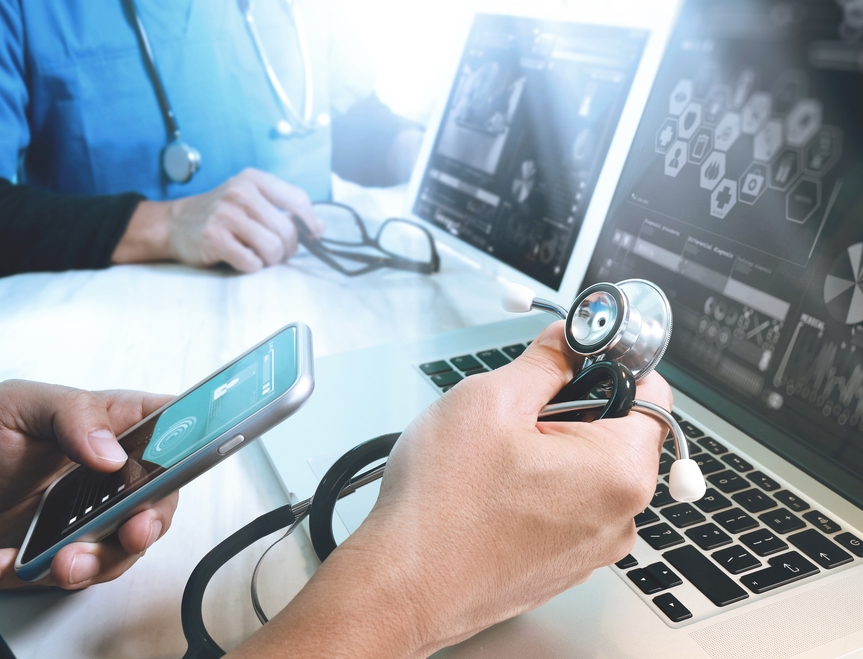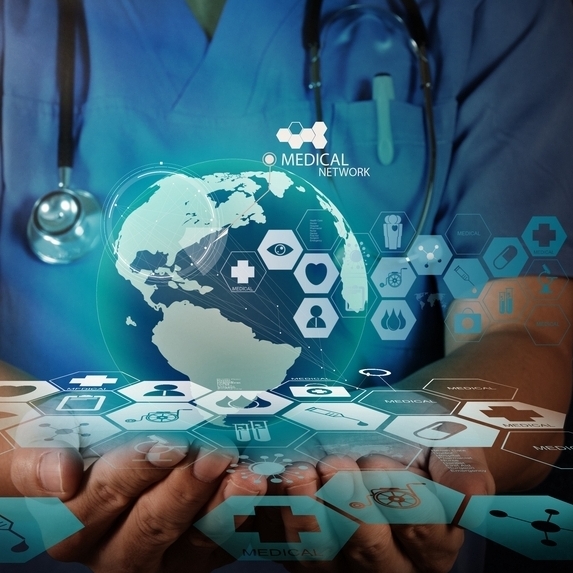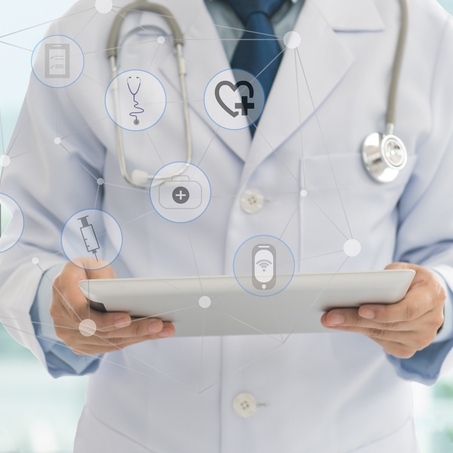Medical Collaboration Management
HealthGuard-MKM is HealthQuest’s premier interactive multimedia communication system for medical collaboration and education. Through its user friendly GUI, HealthGuard-MKM is an international collaborative software system that facilitates interactive telemedicine conversations and medical expert education. The system captures high-resolution digital images and transmits JPEG encoded images and rate-adaptive image transmission to within the range of narrow band to wide band networks, thus implementing functional strategies for interactive real-time collaboration

-
SaaS Enabled for Worldwide Collaboration
HealthGuard-MKM’s ability to deliver its full range of functionality via the web facilitates international medical collaboration activities that allow information exchange among and between foreign experts and local surgeons, while at the same time reducing the need for the conventional forms of international assistance like personnel assistance (e.g. dispatch of experts, invitation of counterparts) or material assistance. Because HealthGuard-MKM is a fully web-enabled system that facilitates multimedia conversations with high-quality real time images and interactive voice, using the system streamlines a variety of medical activities.
-
Streamlined Design
HealthGuard-MKM’s streamlined design enables the transmission of high quality images through low speed channels and provides a set of integrated functions to support real-time medical collaborations. The system also supports wide band networks as well as local area networks so as to support collaborative activities within local domains.
-
State-of-the-Art Image Processing
Unlike many existing commercial applications HealthGuard-MKM ensures high quality imaging even on low speed networks and supports an integrated user friendly operating environment specifically designed for medical applications and capable of carrying out all the functions required for effective medical collaboration.
Fully Web Enabled

Remote Observation
Surgeons and other healthcare professionals can remotely observe their patients with the help of local physicians and the instruments available, and plan properly before transferring patients from one location to another.

Worldwide Experts
Medical staff on location can easily contact outside medical experts for advice. This enables international specialists to spend limited time in specific patient locations, while transferring clinical know-how to local doctors and serving a large number of patients

Online Follow Up
After returning to their primary locations, the medical experts can continue to observe their patients remotely and prescribe necessary treatment and advice by conducting web conversations with local physicians at regular clinical sessions
Streamlined Operation

Flexible Equipment
No special devices are required except a camera (any type), microphone, personal computer, and the access components to the Internet

Worldwide Access
The system is capable of adapting to access channels from narrow to broadband Internet while preserving the high quality of real time image and voice, enabling users to access the system from anywhere in the world

Easy Operation
Operation of the system is simple and straightforward, enabling users such as doctors who lack special knowledge and skills in computer technologies to easily use the system

Interactive Collaboration
Providing tools such as shared images, graphically pointing on the patient’s images, and text chat, gives useful supplementary support for interactive dialogues between remote users